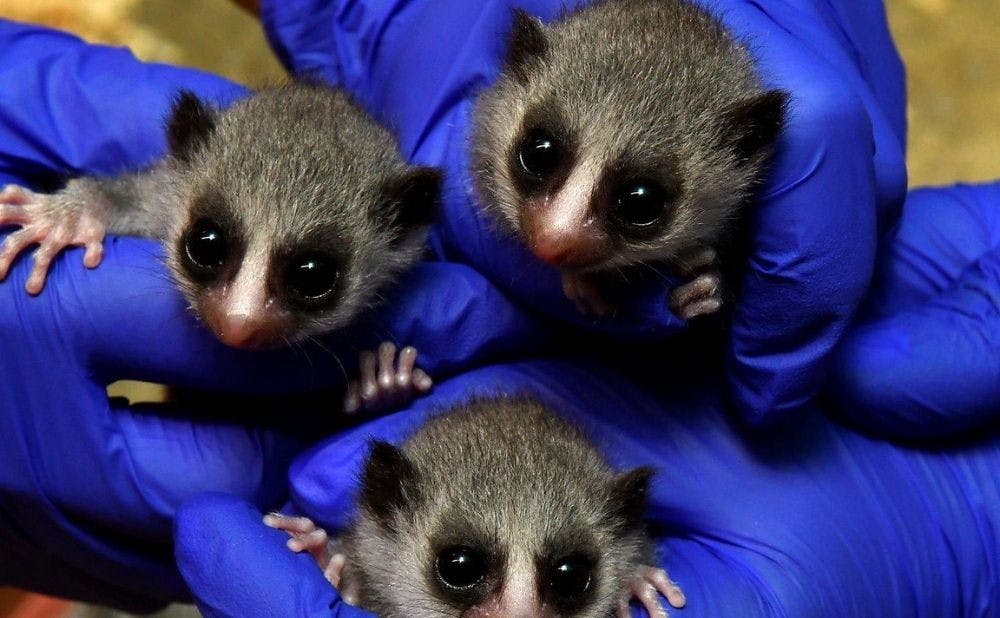Three new members of one of the world’s only hibernating primate species were born recently at the Duke Lemur Center.
The DLC announced Aug. 1 that fat-tailed dwarf lemur triplets were born June 25. Like the rest of the fat-tailed dwarf lemurs at the lemur research facility, the three infants were named after birds: Elephant Bird, Albatross and Bustard.
Every species has “its own naming theme” at the DLC, explained Sara Clark, director of communications for the DLC, in an email to The Chronicle. For example, the blue-eyed black lemurs share names with blue-eyed celebrities like Nicole Kidman and Helen Mirren.
“With so many animals living at the DLC, now and throughout our 53-year history, we can tell just by hearing a name what species each lemur represents,” Clark wrote.
Having litters of three or more fat-tailed dwarf lemurs isn’t uncommon at the DLC. It now has 23 fat-tailed dwarf lemurs, and more than 50% of them are from litter sizes of three or more. Roughly a third of them were triplets, and 17.9% were quadruplets, Clark wrote.
The new triplets have “gained weight at a faster-than-average rate for dwarf lemur triplets” and have had solid food for nearly a month, according to a DLC news release.
Food is integral to the hibernation of fat-tailed dwarf lemurs, as the fat from their food is stored in their tails. The lemurs live off that fat during hibernation. In fact, up to 40% of an individual lemur’s body weight can be stored in its tail, Clark wrote.
When the lemurs return from their dormant states, their tails are much thinner but will grow as they prepare for another hibernation.
“Dwarf lemurs are the only primates on earth that hibernate for an extended period of time—in Madagascar, up to seven months,” Clark wrote. “By mimicking the environmental factors that trigger hibernation in these ancient cousins of ours, Duke researchers are gaining significant insight into how this incredible survival technique works.”
Researchers, such as Marina Blanco and Lydia Greene, have conducted research on the hibernation of fat-tailed dwarf lemurs in Madagascar and at the DLC. And the impact of their research has the potential to help save the lives of humans.
For example, Clark wrote that fat-tailed dwarf lemurs live as much as 10 years longer than their cousins who don’t hibernate, and distinctions between the two could help scientists discover “‘anti-aging’ genes in humans.”
Knowing more about primate hibernation could help soldiers ward off sleep deprivation on long combat missions and “extend the lives of people awaiting organ transplants until suitable donors can be found,” Clark wrote.
They might even provide insight into how humans could survive outside of Earth’s atmosphere.
“By inducing a similar hibernation-like condition in astronauts, these little lemurs may even help us leave the galaxy!” Clark wrote.
Get The Chronicle straight to your inbox
Signup for our weekly newsletter. Cancel at any time.

Stefanie Pousoulides is The Chronicle's Investigations Editor. A senior from Akron, Ohio, Stefanie is double majoring in political science and international comparative studies and serves as a Senior Editor of The Muse Magazine, Duke's feminist magazine. She is also a former co-Editor-in-Chief of The Muse Magazine and a former reporting intern at PolitiFact in Washington, D.C.

